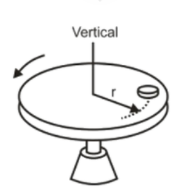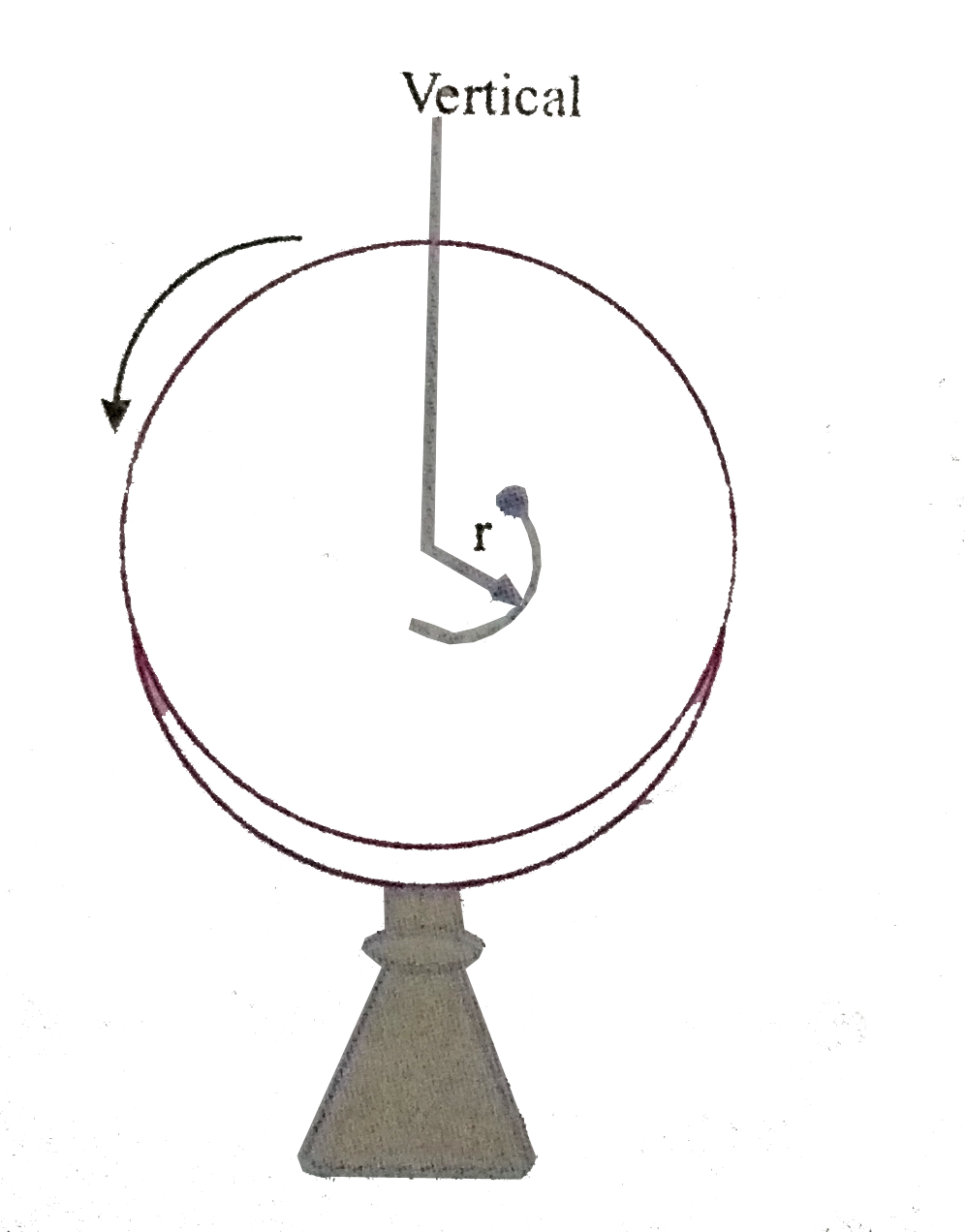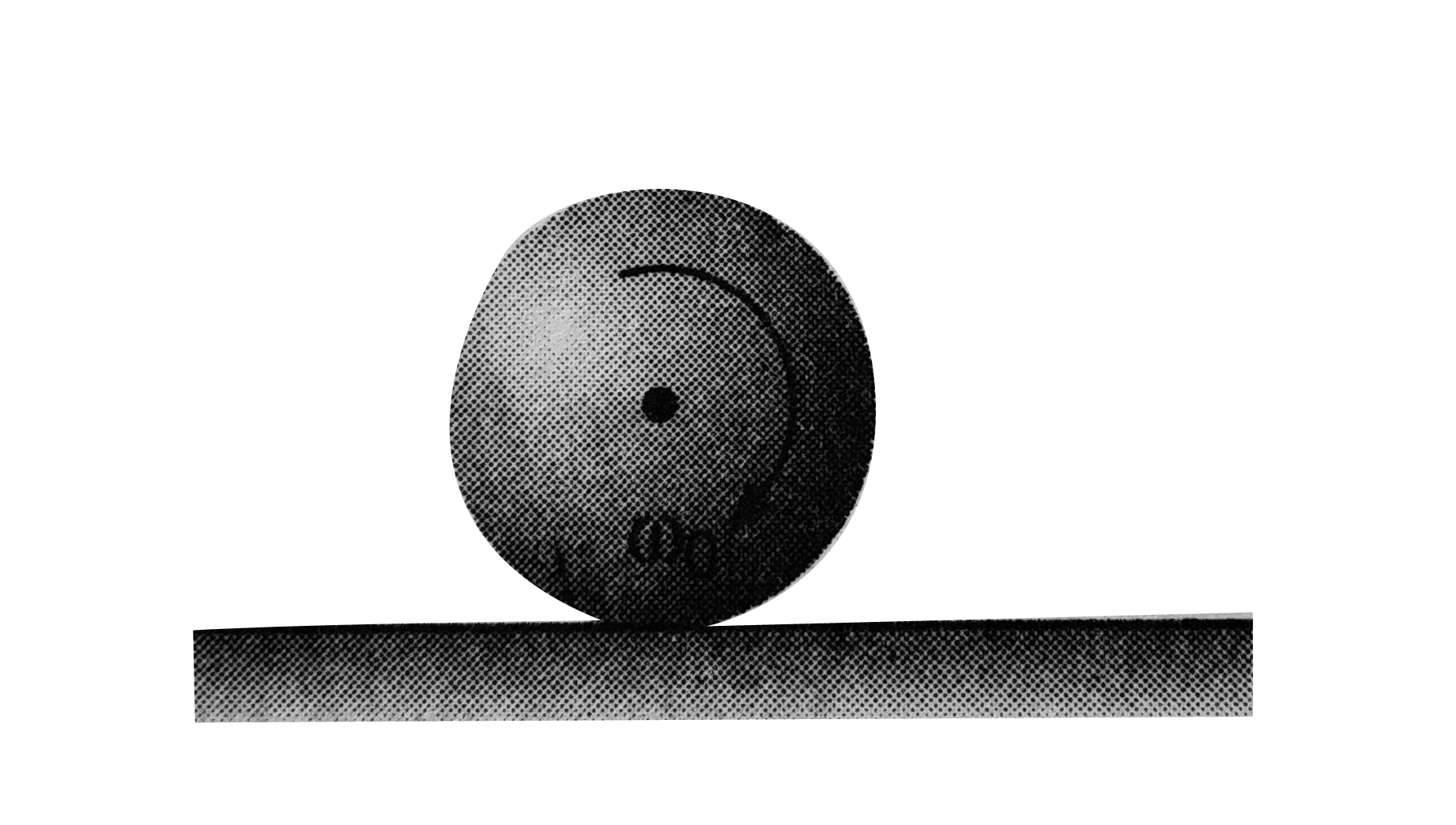A solid disc and a ring, both of radius 10cm are placed on a horizontal table simultaneously, with initial angular speed equal to 10πrad/s. Which of the two will start to roll earlier ? The coefficient of kinetic friction is μk=0.2.
To solve the problem, we need to analyze the motion of both the solid disc and the ring under the influence of kinetic friction. We will determine which object starts rolling earlier based on their respective moments of inertia and the effect of friction.
1. Identify the Given Data:
- Radius of both the disc and the ring, R=10cm=0.1m
- Initial angular speed, ω0=10πrad/s
- Coefficient of kinetic friction, μk=0.2
2. Calculate the Frictional Force:
The frictional force acting on both objects is given by:
F=μkmg
where m is the mass of the object and g is the acceleration due to gravity (approximately 9.81m/s2).
3. Determine the Linear Acceleration:
The linear acceleration a due to the frictional force is:
a=μkg
Substituting the values:
a=0.2×9.81≈1.962m/s2
4. Calculate the Torque Acting on Each Object:
The torque τ due to friction is given by:
τ=F⋅R=μkmgR
5. Determine the Moment of Inertia:
- For the solid disc, the moment of inertia Idisc is:
Idisc=12mR2
- For the ring, the moment of inertia Iring is:
Iring=mR2
6. Calculate Angular Acceleration:
The angular acceleration α can be calculated using:
τ=Iα⟹α=τI
For the disc:
αdisc=μkmgR12mR2=2μkgR
For the ring:
αring=μkmgRmR2=μkgR
7. Determine the Time to Start Rolling:
The condition for rolling without slipping is:
v=Rω
The linear velocity v can be expressed as:
v=at
The angular velocity after time t is:
ω=ω0−αt
Setting v=Rω gives:
at=R(ω0−αt)
Rearranging for time t:
t=Rω0a+α
8. Substituting Values:
For the disc:
tdisc=Rω0μkg+2μkgR=Rω0μkg(1+2/R)
For the ring:
tring=Rω0μkg+μkgR=Rω0μkg(1+1/R)
9. Compare the Times:
Since the moment of inertia for the ring is greater than that of the disc, it will take longer for the ring to start rolling compared to the disc. Thus:
tdisc<tring
Conclusion:
The solid disc will start to roll earlier than the ring.
- Radius of both the disc and the ring, R=10cm=0.1m
- Initial angular speed, ω0=10πrad/s
- Coefficient of kinetic friction, μk=0.2
The frictional force acting on both objects is given by:
F=μkmg
where m is the mass of the object and g is the acceleration due to gravity (approximately 9.81m/s2).
The linear acceleration a due to the frictional force is:
a=μkg
Substituting the values:
a=0.2×9.81≈1.962m/s2
The torque τ due to friction is given by:
τ=F⋅R=μkmgR
- For the solid disc, the moment of inertia Idisc is:
Idisc=12mR2
- For the ring, the moment of inertia Iring is:
Iring=mR2
The angular acceleration α can be calculated using:
τ=Iα⟹α=τI
For the disc:
αdisc=μkmgR12mR2=2μkgR
For the ring:
αring=μkmgRmR2=μkgR
The condition for rolling without slipping is:
v=Rω
The linear velocity v can be expressed as:
v=at
The angular velocity after time t is:
ω=ω0−αt
Setting v=Rω gives:
at=R(ω0−αt)
Rearranging for time t:
t=Rω0a+α
For the disc:
tdisc=Rω0μkg+2μkgR=Rω0μkg(1+2/R)
For the ring:
tring=Rω0μkg+μkgR=Rω0μkg(1+1/R)
Since the moment of inertia for the ring is greater than that of the disc, it will take longer for the ring to start rolling compared to the disc. Thus:
tdisc<tring
The solid disc will start to roll earlier than the ring.
Topper's Solved these Questions
- SYSTEMS OF PARTICLES AND ROTATIONAL MOTIONBOOK - NCERT ENGLISHCHAPTER - SYSTEMS OF PARTICLES AND ROTATIONAL MOTIONEXERCISE - EXERCISE
33 Videos
- PHYSICAL WORLD BOOK - NCERT ENGLISHCHAPTER - PHYSICAL WORLD EXERCISE - EXERCISE
16 Videos
- THERMAL PROPERTIES OF MATTERBOOK - NCERT ENGLISHCHAPTER - THERMAL PROPERTIES OF MATTEREXERCISE - EXERCISE
22 Videos
Similar Questions
A cylinder of mass 5kg and radius 10cm is moving on a horizontal surface with speed. 5m/s and angular speed about axis through C.M.10rad/s. Find the angular momentum of the cylinder about point of contact.
View SolutionA small coin of mass 40 g is placed on the horizontal surface of a rotating disc. The disc starts from rest and is given a constant angular acceleration α=2 rad s−2. The coefficient of static friction between the coin and the disc is μs=3/4 and the coefficient of kinetic friction is μk=0.5. The coin is placed at a distance r=1m from the centre of the disc. The magnitude of the resultant force on the coin exerted by the disc just before it starts slipping on the disc is?

View Solution
Knowledge Check
A ring of radius R is rotating with an angular speed ω0 about a horizontal axis. It is placed on a rough horizontal table. The coefficient of kinetic friction is μk. The time after it starts rolling is.
AωoμkR2gBωog2μkRC2ωoRμkgDωoR2μkg
A small coin of mass 80g is placed on the horizontal surface of a rotating disc. The disc starts from rest and is given a constant angular acceleration α=2rad/s2. The coefficient of static friction between the coin and the disc is μs=3/4 and cofficient of kinetic friction is μk=0.5. The coin is placed at a distance r=1m from the centre of the disc. The magnitude of the resultant force on the coin exerted by the disc just before it starts slipping on the disc is

View SolutionA small coin of mass 80g is placed on the horizontal surface of a rotating disc. The disc starts from rest and is given a constant angular acceleration α=2rad/s2. The coefficient of static friction between the coin and the disc is μs=3/4 and cofficient of kinetic friction is μk=0.5. The coin is placed at a distance r=1m from the centre of the disc. The magnitude of the resultant force on the coin exerted by the disc just before it starts slipping on the disc is

View Solution
solid sphere of radius r is gently placed on a rough horizontal ground with an initial angular speed ω0 and no linear velocity. If the coefficient of friction is μ, find the time t when the slipping stops. in addition state the linear velocity v and angular velocity ω at the end of slipping
View SolutionA solid cylinder wheel of mass M and radius R is pulled by a force F applied to the centre of the wheel at 37∘ to the horizontal. If the wheel is to roll without slipping, what is the maximum value of |F| ? The coefficients of static and kinetic friction are μs=0.40 and mk=0.30.(sin37∘=35)
View SolutionA disc of radius R rotates from rest about a vertical axis with a constant angular acceleration such that a coin placed with a tangenitial between a as shown in figure If the coefficient of static friction between the coin and disc is μs .Find the velocity of the before it start sliding relative as the disc

View SolutionA disc of radius R rotates from rest about a vertical axis with a constant angular acceleration such that a coin placed with a tangenitial between a as shown in figure If the coefficient of static friction between the coin and disc is μs .Find the velocity of the before it start sliding relative as the disc

View SolutionA coin is placed at the edge of a horizontal disc rotating about a vertical axis through its axis with a uniform angular speed 2 rad s−1. The radius of the disc is 50 cm. Find the minimum coefficient of friction between disc and coin so that the coin does not slip. (Take g=10m/s2)
View Solution
